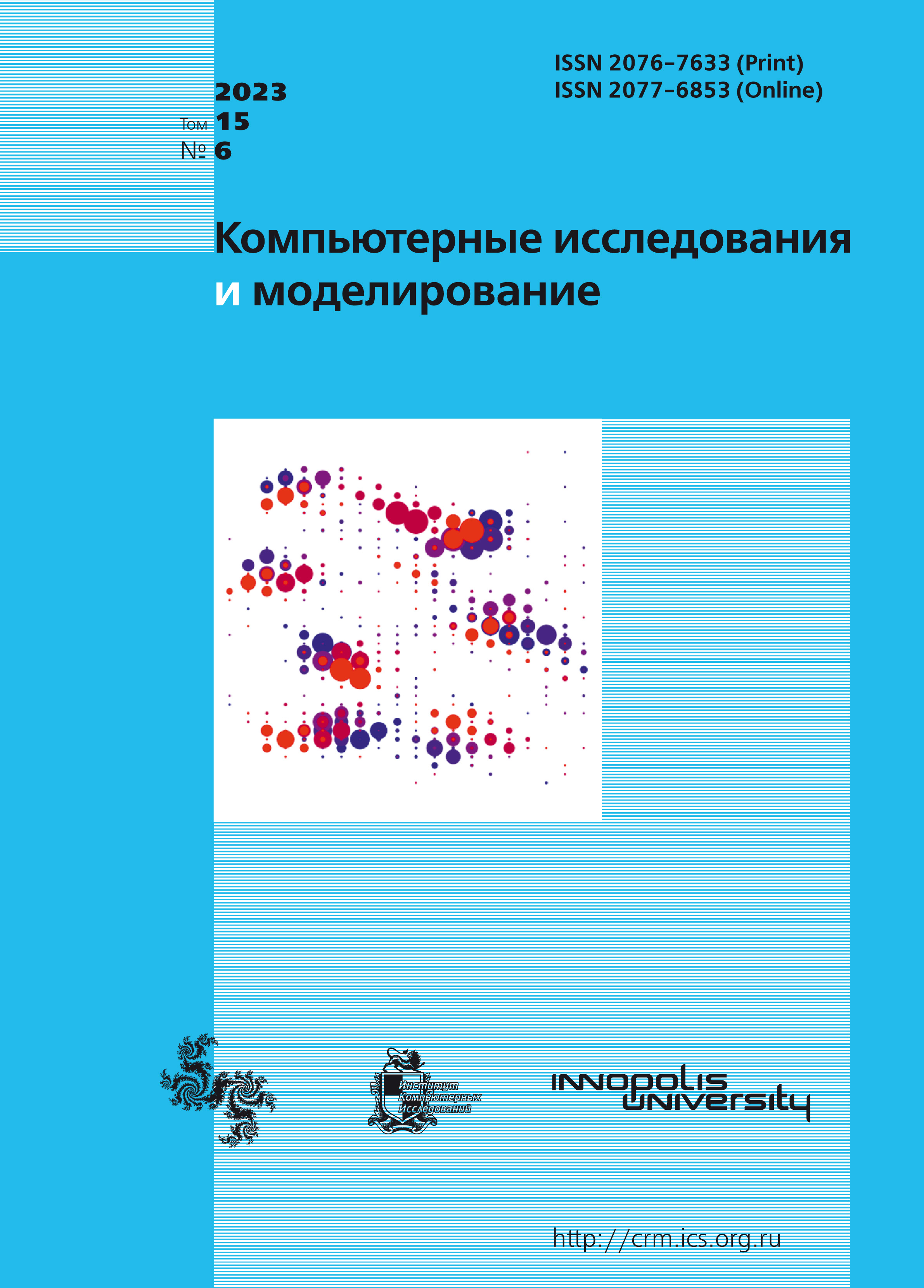All issues
- 2024 Vol. 16
- Issue 1 (special issue)
- 2023 Vol. 15
- 2022 Vol. 14
- 2021 Vol. 13
- 2020 Vol. 12
- 2019 Vol. 11
- 2018 Vol. 10
- 2017 Vol. 9
- 2016 Vol. 8
- 2015 Vol. 7
- 2014 Vol. 6
- 2013 Vol. 5
- 2012 Vol. 4
- 2011 Vol. 3
- 2010 Vol. 2
- 2009 Vol. 1
Computer model development for a verified computational experiment to restore the parameters of bodies with arbitrary shape and dielectric properties
 pdf (2567K)
pdf (2567K)
The creation of a virtual laboratory stand that allows one to obtain reliable characteristics that can be proven as actual, taking into account errors and noises (which is the main distinguishing feature of a computational experiment from model studies) is one of the main problems of this work. It considers the following task: there is a rectangular waveguide in the single operating mode, on the wide wall of which a technological hole is cut, through which a sample for research is placed into the cavity of the transmission line. The recovery algorithm is as follows: the laboratory measures the network parameters (S11 and/or S21) in the transmission line with the sample. In the computer model of the laboratory stand, the sample geometry is reconstructed and an iterative process of optimization (or sweeping) of the electrophysical parameters is started, the mask of this process is the experimental data, and the stop criterion is the interpretive estimate of proximity (or residual). It is important to note that the developed computer model, along with its apparent simplicity, is initially ill-conditioned. To set up a computational experiment, the Comsol modeling environment is used. The results of the computational experiment with a good degree of accuracy coincided with the results of laboratory studies. Thus, experimental verification was carried out for several significant components, both the computer model in particular and the algorithm for restoring the target parameters in general. It is important to note that the computer model developed and described in this work may be effectively used for a computational experiment to restore the full dielectric parameters of a complex geometry target. Weak bianisotropy effects can also be detected, including chirality, gyrotropy, and material nonreciprocity. The resulting model is, by definition, incomplete, but its completeness is the highest of the considered options, while at the same time, the resulting model is well conditioned. Particular attention in this work is paid to the modeling of a coaxial-waveguide transition, it is shown that the use of a discrete-element approach is preferable to the direct modeling of the geometry of a microwave device.
Indexed in Scopus
Full-text version of the journal is also available on the web site of the scientific electronic library eLIBRARY.RU
The journal is included in the Russian Science Citation Index
The journal is included in the RSCI
International Interdisciplinary Conference "Mathematics. Computing. Education"






